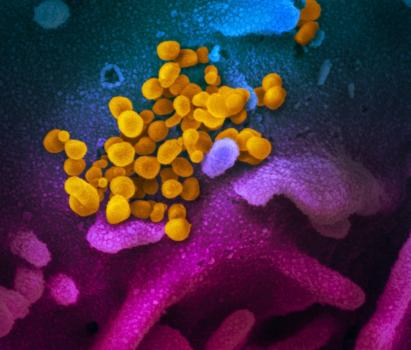https://www.nytimes.com/2020/11/20/health/covid-vaccine-95-effective.html
Hold on a minute, please. 95% efficacy sounds good and boosted Pfizer's and Moderna's stock, as if they weren't getting enough shekels from the US government. I may have reported on this article before but I wanted to stress, with my solipsist's hat off and my epidemiologist's hat on (full disclosure, my epi is self-taught) that they should be testing all people who got either the vaccine or the placebo for Covid-19 by pcr analysis. According to the article (and convention), researchers wait for participants to develop symptoms and then figure out which group the illnesses came from. But it seems that in the case of the virus caused by Sars-Co-V2 many asymptomatic cases have been identified by widespread testing of people who are believed to have been in contact with an infected or symptomatic individual. It would be the right and correct thing to do to test everyone who received a treatment, which may represent a revision of practice. A quote from the article, and worth reiterating, "And so it’s possible that a number of people who got vaccinated in the clinical trials got infected, too, without ever realizing it. If those cases indeed exist, none of them are reflected in the 95 percent efficacy rate."
https://www.nytimes.com/2020/12/02/world/europe/cannabis-united-nations-drug-policy.html
This is a NYT article about the reclassification of cannabis used for medical purposes by the UN Commission for Narcotic Drugs from a category of drugs including dangerous, addictive drugs like heroin, which will pave the way for its use for medical purposes as has been done safely throughout history, and allow countries to widen patients' access to treatment using this drug. Products containing cannabis derivatives like CBD are a cornerstone of the wellness industry. One of the implications of this change is a potential change in the reliance on opiates for pain relief.
https://science.sciencemag.org/content/370/6520/1023
This is an article from Science magazine about the various ways schools are stretching their mandates to cope with the Coronavirus crisis. It reflects the changes from when New Zealand, Norway and Japan, having dealt with the crisis, moved cautiously at first then threw open the school doors, with the idea that the need for in-person schooling superseded the danger due to the virus. But things are different now, as the article notes. The virus has revealed disparities between wealthy and poorer communities, some of the latter being unable to provide quality distance education. Some countries are closing bars and restaurants, while keeping schools open. The Czech Republic, Austria and Russia finally gave in and closed schools recently. Outbreaks in schools are not common....Duke U reports on the cases identified in 6 N. Carolina school districts in the first 9 weeks of school (50,000 students and staff) (197 identified cases acquired outside of school by community spread and 8 cases spread from one person to another within schools, which were determined to be "secondary transmission"). There are asymptomatic cases missing from this data. Sequencing the virus could provide important information about whether the cases within a school are even related. Whether schools should remain open is going to be a continuing question possibly through the end of the school year and an epidemiological, medical and political, moving target.
https://www.nytimes.com/2020/12/02/style/can-these-period-underwear-crusaders-convert-you.html
A NYT article about fashion, unusual for the SoSo. Let's talk periods that don't end sentences. Bleeding into your underwear. Or, the meeting where you are scheduled to talk and your handbag is at your desk and then you uh-oh. There is a company called The Period Company that sells period underwear. (I just like writing that word.) They want us (well, not me anymore) to break with tradition and consider buying "period panties." A marketing survey revealed that the younger cohort, aged 18-34 would be interest in reusables in order to protect the environment. The older group, 30s and 40s were against this type of product. It is like a type of shapewear with a pad sewn into the crotch. The product is washed and reused. It is time to move on to Period underwear for "that time of the month".
https://www.nytimes.com/2020/12/04/upshot/epidemiologists-virus-survey-.html
A NYT survey from The Upshot about how 700 epidemiologists are living now. 24 activities were included in the survey and those answering in the affirmative ranged from 90 to 2%. What things are they doing or avoiding. And when might that change. Going grocery shopping 90%. Seeing friends indoors depends on circumstances (in home of elderly relative or friend 10%, attended small dinner party 9%, church service, 4%). 30% would expect to change after they themselves were vaccinated. A minority said that if highly effective vaccines were distributed it would be safe for Americans to live freely this summer. Most agreed that indoor venues with lots of people present the most danger. At least one of the epidemiologists expects it to be at least the next 12 to 18 months and maybe a few years of masking, which will begin to be "the new normal".





No comments:
Post a Comment